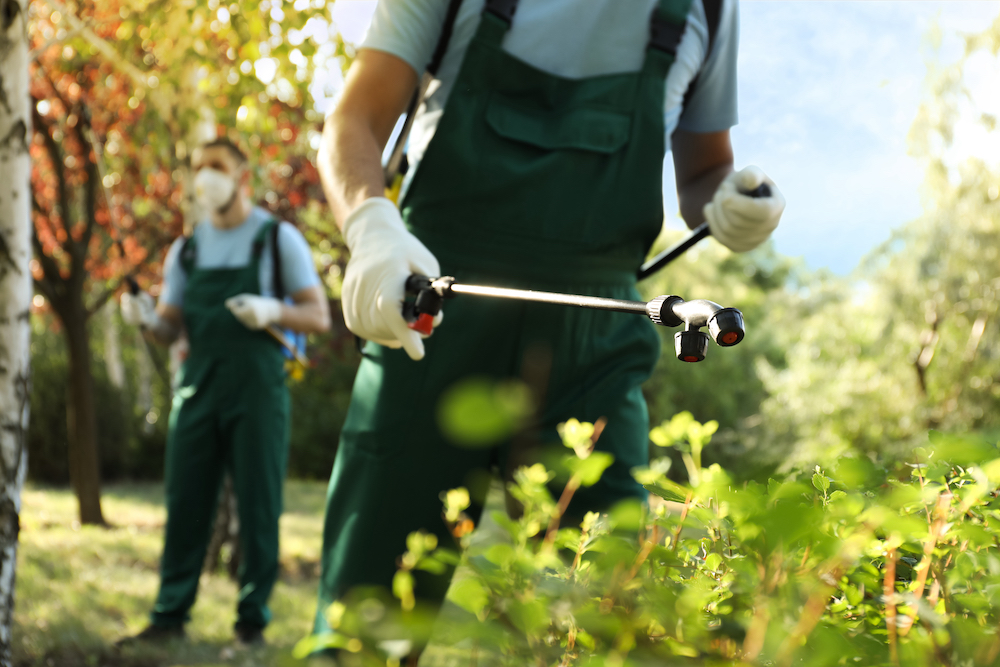- Categories:
- Maintenance
- Landscaping
- Irrigation

Do you have hard water? If you live in the US, chances are you do! In fact, 85% of the country experiences issues with hard water. And that is causing your herbicide to not work as effectively as it should.
What is Hard Water?
Hard water has large amounts of Calcium (Ca++), Magnesium (Mg++), and often Iron (Fe+). All of these positively charged elements in the water will immediately ‘bond' with the negatively-charged herbicides, “tying them up” and render them unable to enter and kill the weeds.
What's the Solution?
Water conditioner – when applied to the water BEFORE the herbicides – will bond with the hard water elements and prevent them from ‘tying up' the herbicides. As an added benefit, TurfGro Water Conditioning Agent is ammonium sulfate-based (fertilizer based). It will stimulate the weed's metabolism, causing it to take-in the herbicide faster, and move it through the plant faster – for a faster kill.
What About Glyphosate?
Some of you may be thinking, “but that doesn't happen when I use glyphosate”. Actually, it does. You are probably just using more than the recommended 2 oz. mix. Reality is, most people over apply their glyphosate product and have for a very long time, because the post-patent versions have become so cheap. Instead of mixing the recommended 2 ounces of glyphosate per gallon of water, they'll commonly mix as much as 6 or 8 ounces. Why? Because 2 ounces of glyphosate in un-conditioned water won't kill anything!
You probably don't realize it, but the over-mix of glyphosate is conditioning the water. At least 3-4 of the 6 ounces you put into the water will immediately be tied-up by the hard water elements. But with the overapplication you have 2 or 3 ounces left over to do the job. However, this is a VERY expensive way to condition the water. An ounce of glyphosate costs about 15 cents., so you're spending about 45-60 cents per gallon to condition your water. By contrast, an ounce of TurfGro Water Conditioning Agent costs about 13 cents - - and you typically only need a half-ounce per gallon of water. That's a savings of over $2.00 for every backpack sprayer!
This scenario is true for most systemic herbicides (e.g.: Trimec, Certainty, etc.). They are all prone to the same ‘tie-up' in our hard water and conditioning the water before mixing it in will greatly improve the herbicide's effectiveness.
Español
ACONDICIONADOR DE AGUA - EL SECRETO PARA EL CONTROL EFICAZ DE LAS MALEZAS
¿Tienes agua dura? Si vives en los Estados Unidos, ¡es probable que si la tengas! De hecho, el 85% del país experimenta problemas con el agua dura y eso está causando que su herbicida no funcione tan efectivamente como debería.
¿Qué es el agua dura?
El agua dura tiene grandes cantidades de calcio (Ca++), magnesio (Mg++) y, a menudo, hierro (Fe+). Todos estos elementos cargados positivamente en el agua se 'unirán' inmediatamente con los herbicidas cargados negativamente, "atándolos" y haciéndolos incapaces de entrar y matar las malas hierbas.
¿Cuál es la solución?
El acondicionador de agua, cuando se aplica al agua ANTES de aplicar los herbicidas, se unirá a los elementos positivos del agua dura evitando que se "fijen" los herbicidas. Como beneficio adicional, el agente acondicionador de agua TurfGro está basado en sulfato de amonio (basado en fertilizante) estimulando el metabolismo de la maleza, lo que hará que absorba el herbicida más rápido y lo mueva a través de la planta ágilmente, para matarlo prontamente.
¿Qué pasa con el glifosato?
Algunos de ustedes pueden estar pensando, “pero eso no sucede cuando uso glifosato”. En realidad, si ocurre. Probablemente esté usando más de las 2 oz recomendadas en la mezcla. La realidad es que la mayoría de las personas aplican en exceso su producto de glifosato y lo han hecho durante mucho tiempo, porque las versiones posteriores a la patente se han vuelto muy baratas. En lugar de mezclar las 2 onzas recomendadas de glifosato por galón de agua, comúnmente mezclan hasta 6 u 8 onzas. ¿Por qué? ¡Porque 2 onzas de glifosato en agua no acondicionada no matarán nada!
Probablemente no se dé cuenta, pero la mezcla excesiva de glifosato está condicionando el agua. Al menos 3-4 de las 6 onzas que pones en el agua quedarán atrapadas inmediatamente por los elementos de carga positiva del agua dura. Pero con la sobre aplicación te sobran 2 o 3 onzas para hacer el trabajo. Sin embargo, esta es una forma MUY costosa de acondicionar el agua. Una onza de glifosato cuesta alrededor de 15 centavos, por lo que gasta entre 45 y 60 centavos por galón para acondicionar el agua. Por el contrario, una onza de agente acondicionador de agua TurfGro cuesta alrededor de 13 centavos y, por lo general, solo necesita media onza por galón de agua. ¡Eso es un ahorro de más de $2! por cada rociador de espalda!
Este escenario es cierto para la mayoría de los herbicidas sistémicos (por ejemplo: Trimec, Certainty, etc.). Todos son propensos a la misma 'atadura' en nuestra agua dura y el acondicionar el agua antes de mezclarla mejorará en gran medida la eficacia del herbicida.